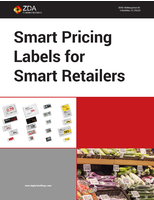VAST® Composite Pavers Reduce the Carbon Footprint of Landscape and Permeable Pavers by 96 Percent Versus Concrete
Share:

Installing 10,000 Square Feet of VAST Composite Pavers instead of Concrete Pavers Reduces CO2 Emissions by more than 395,000 Pounds
MINNEAPOLIS - Earth Day: Leaders in architecture and green building have challenged the manufacturers of building products to reduce greenhouse gas (GHG) emissions resulting from product manufacture and transportation. For 2030, the goal is a 50 percent reduction from the average embodied carbon footprint by product category. For at least one type of product, landscape and permeable pavers, there is no need to wait for 19 more Earth Days before such an ambitious goal is not just reached but surpassed.
Today, Earth Day 2011, VAST® Enterprises announced that VAST® Composite Pavers have achieved a 96 percent reduction in CO2 emissions compared to concrete pavers. One square foot of concrete pavers embodies more than 40 pounds of CO2. The equivalent for VAST Composite Pavers is 1.5 pounds.
"Every 10,000 square feet of concrete pavers result in 412,264 pounds of CO2 emissions. With VAST Composite Pavers, it's only 15,432 pounds," said Andy Vander Woude, LEED AP, chief executive officer, VAST Enterprises, LLC. "The 396,832 pound reduction with VAST is equivalent to keeping 35 passenger cars off the road for a year."
Architecture 2030, a non-profit, non-partisan and independent organization, was established in 2002 in response to the climate change crisis. Its mission is to transform the building sector from a major contributor to greenhouse gas emissions to a central part of the solution. The organization's 2030 Challenge for Products calls on the global architecture, planning, design, and building community to specify, design, and manufacture products to meet a carbon-equivalent footprint 35 percent below the product category average in 2015; 40 percent in 2020; 45 percent in 2025; and 50 percent by 2030.
Architecture 2030, which will not endorse particular products, is devoting two years from 2011 to 2013 to the development of industry standards and product averages via Life Cycle Assessments (LCAs). The LCA undertaken by VAST follows the methodology outlined in ISO 14040:2006 and relies on U.S. Department of Energy data to calculate energy use, water consumption and CO2 production for concrete and VAST's composite material. The LCA covers materials processing, materials transportation and product manufacture.
"Standards will be defined, debated, and refined. VAST shows today that innovative manufacturers can achieve significant reductions in their products' carbon footprints," said Troy Achterkirch, vice president, operations and engineering, VAST Enterprises, LLC. "That's why we are making our LCA data and calculations available to the green building community."
VAST Enterprises, LLC has developed and patented material science technology that transforms post-consumer recycled rubber and plastics into a new green building material: composite masonry. All composite masonry products are cradle-to-cradle green. The manufacturing process starts with recycled car tires and plastic containers, emits minimal amounts of greenhouse gases, does not generate volatile organic compounds, yields zero scrap, and creates products that are 100 percent recyclable.
"Every 10,000-square foot installation keeps 5,000 tires and 150,000 plastic containers from getting dumped in U.S. landfills," said Steve Smith, chief technology officer, VAST Enterprises, LLC. "VAST installations to date have used more than four million pounds of recycled rubber and plastics and prevented more than 1.7 million pounds of CO2 emissions."
"VAST achieved a scientific breakthrough by engineering the world's first rubber-plastic composite with up to 95 percent recycled content and the performance characteristics for masonry," said P.M. Subramanian, PhD, president, SPM Technologies and director of the Environmental Division of the Society of Plastic Engineers (SPE). "Rubber has flexibility and toughness, and plastics have good stiffness and durability. By combining them, using its proprietary technology, VAST has created a unique composite material that is strong and durable."
VAST Composite Pavers provide strength and durability plus the design versatility and aesthetic appeal required for hardscaping and landscaping. In addition, products manufactured in VAST's composite material are one-third the weight of concrete. That makes them easier to use, faster to install, and ideal for applications for which conventional masonry would be too heavy or cumbersome.
Note: Copies of the VAST Life Cycle Assessment report are available in a PDF. Requests should be sent via e-mail to LCA@vastpavers.com.
VAST Enterprises, LLC
VAST applies its patented technology to transform recycled materials into a new resource for green building: composite masonry. VAST composite products - including landscape pavers, permeable pavers for stormwater management, deck and roof pavers, and thin brick - offer an engineered alternative to molded concrete and clay brick. VAST meets the most demanding requirements for aesthetics, durability, sustainability and installation efficiency. Award-winning VAST pavers deliver rich colors, superior slip resistance and unbeatable strength at one-third the weight of concrete pavers. VAST can contribute to more LEED® credits than any other paver. Today, every 5,000-square foot VAST landscape installation keeps 2,500 scrap automobile tires and 75,000 plastic containers out of U.S. landfills. Tomorrow? The Future is VAST(TM). Learn more at vastpavers.com. Then call (612) 234-8958.
Media Contact: David Aquilina, (612) 716-5828, davida@strategicstoryteller.com




